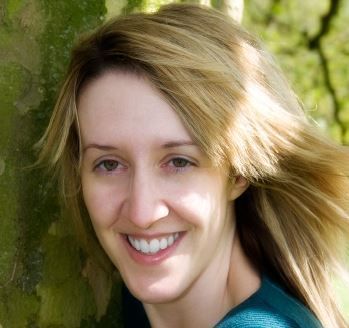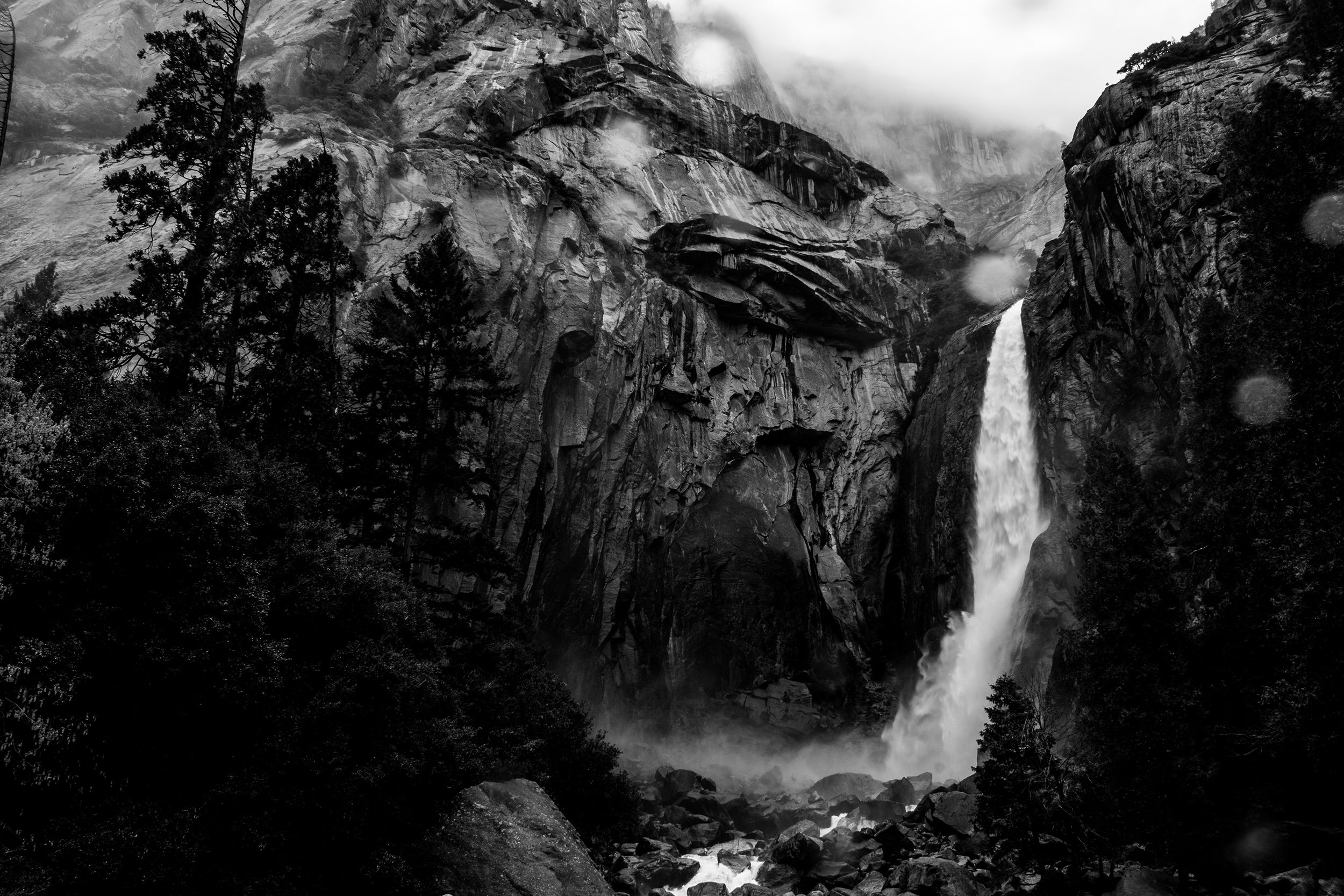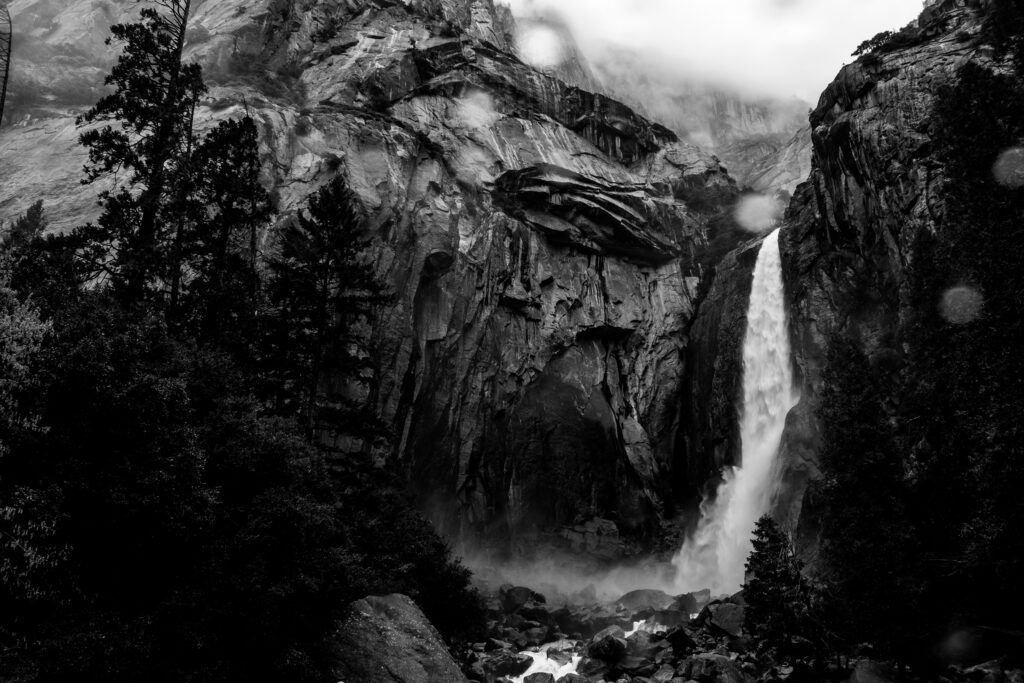Fine art photography in its truest form is a highly creative and niche genre. The works produced are generally designed to be displayed as wall art and are completely in contrast to representational photography, such as photojournalism.
How do we define fine art photography? Like most art, the definition is open to interpretation, but to my mind at least, fine art photography combines photography with conceptual ideas. The photographer’s view and perception of the world are expressed through their photography. You could argue that there is an overlap with other photography genres, in particular documentary photography, but fine artwork could be said to follow all or some of the seven principles of art and design. These are balance, rhythm, pattern, emphasis, contrast, unity, and movement. By applying these to a photo, art photographers can create images grounded in the foundations of art theory.
Whatever approach is taken, it’s safe to say that fine art photography is always first and foremost about the artist. The camera is used as a tool to capture what the artist sees and, by extension, wants us to see. A fine art photograph is never a literal representation of a scene or subject; it needs to reveal that it was created by the artist with a clear vision behind it.

What makes a photograph into a fine art image is, in itself, subjective. However strong an artist’s intent, viewers will take different things away from the photograph presented to them. Like all forms of art, not everyone will always agree on whether a photograph is fine art. But I feel this is fine and a fair trade-off. There is a high amount of skill involved in taking images that provoke a strong reaction in a viewer – good or bad.
As with many genres of photography, art photography has been somewhat swamped by the advent of digital technology and cell phones. It’s easy for people to claim that they’ve photographed a fine art image, but there are still a set of photographers who command high sums for their images and truly deserve the title of an art photographer. Unfortunately, it’s an incredibly difficult genre to succeed in and it should be noted that many successful artists have an edge in either acquaintances or family money. In addition, as with most art, many of the most successful art photographers are no longer with us, meaning that their work increases in value. We will look at a few of the most successful art photographers below.
Recommended Reading: Want to learn how to make your photos stand out from everyone else’s? Grab a copy of Photzy’s Effective Storytelling premium guide.
Andreas Gursky
German artist Andreas Gursky holds the record for the most expensive photograph ever sold. Rhein II sold in 2011 for an astonishing $4.3m. Gursky grew up in highly restricted and politicized East Germany, which undoubtedly had a strong impact on his artistic approach. With a keen interest in architecture, Gursky states, “I only pursue one goal – the encyclopedia of life.” His work frequently explores the question of how we order the world in a photograph.
Gursky is known for his astonishingly detailed large-scale digitally manipulated images, similar in scale too early 19th-century landscape paintings, which capture both natural and manmade environments. Often photographed from an elevated vantage point, the perspective of his images allows viewers to encounter scenes normally beyond reach. Before the 1990s, Gursky did not digitally manipulate his images but has come to rely heavily on computers to edit, enhance, and achieve his signature style.
Gursky states, “I only pursue one goal – the encyclopedia of life.” His work frequently explores the question of how we order the world in a photograph.
One might consider Gursky’s images to be fairly straightforward and even deadpan, drawn as he is too large, anonymous spaces (high-rise buildings, stock exchanges, the banks of the Rhine River), but Gursky’s skill lies in manipulating an image so that we accept it as reality. Look more closely at his images and we start to see how everything in the image is sharp in a way it could never be in reality. There is no natural perspective in many of his shots and the images often have an almost dizzying repetition of the elements contained within them. And yet, despite or indeed because of this, his work is extraordinarily compelling. The sheer size of the images draws a viewer in and it’s common to see visitors to his exhibitions staring at one shot for hours (myself included!).
What sets Gursky apart from other photographers and even other fine art photographers is, I believe, the sheer size and magnitude of his images combined with the otherworldly feel of his work when viewed at close quarters. They are truly works of art.
Cindy Sherman
Cindy Sherman is an American photographer and filmmaker, famous for her self-portraits and use of her own body to create personas in her work. Between 1977 and 1980 she released her seminal series Untitled Film Stills, black and white images featuring the artist as a model, which sort to look at the stereotypical way in which women are often portrayed in film, television, and advertising.
Like Gursky, Sherman’s works regularly sell for millions of dollars. Her work probes the construction of identity, with Untitled Film Stills using cinematic conventions to structure the images. Sherman’s images are a clever distortion of femininity as a social construct. At first glance, many of her images appear seductive and engaging, but on closer examination, they prove disturbing and challenging to viewers.
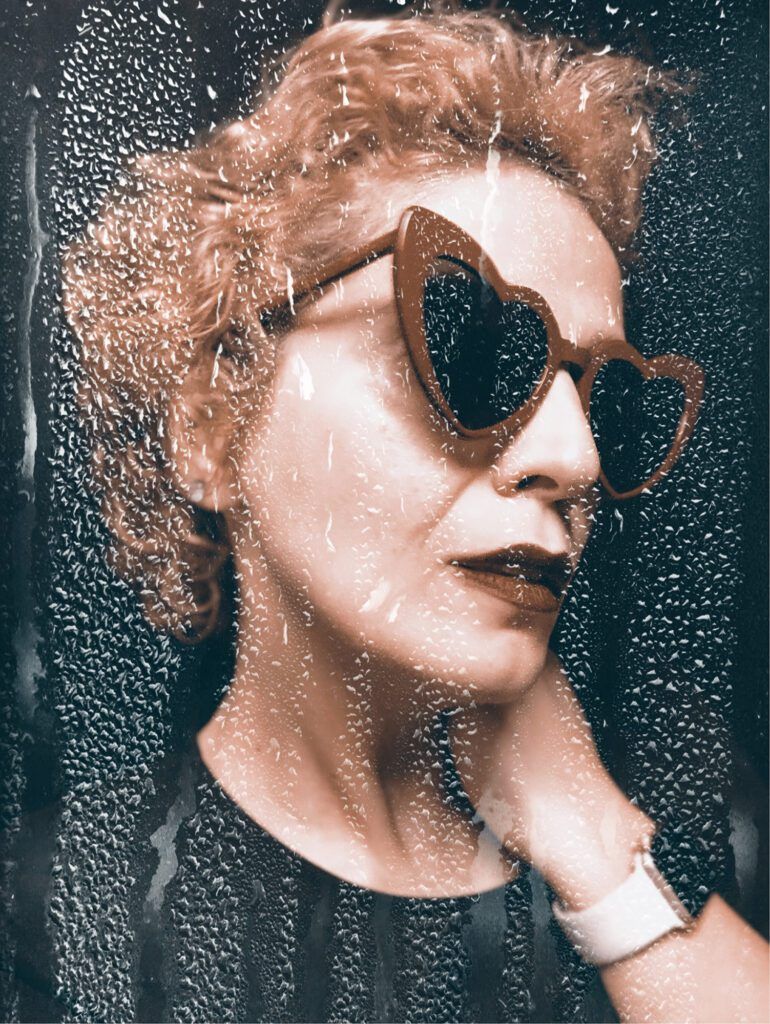
Sherman has continued to work in series, with her work Centerfolds providing some of her most recognizable work. Awkward postures, peeling prosthetics, and poorly applied makeup subvert the sexual feel of the images, highlighting the artificiality of these fabrications that we’re faced with within so much of daily life.
Sherman often works with large-scale images, forcing the viewer to confront the ambiguity of these stereotypes that she’s portraying in a dominant reality.
Robert Mapplethorpe
Robert Mapplethorpe was an American photographer, best known for his black and white portraits and for documenting New York’s S&M scene. He was primarily concerned with Classical aspects of beauty with light, shadow, composition, and form all being central to his work. Aspects of his work came under fire in the late ’80s for supposed obscenity, with the religious right arguing that the US Government should not fund the arts at all. But Mapplethorpe himself saw nothing shocking in his work, preferring to use it to utilize different photographic techniques, such as photogravures and Cibachrome.
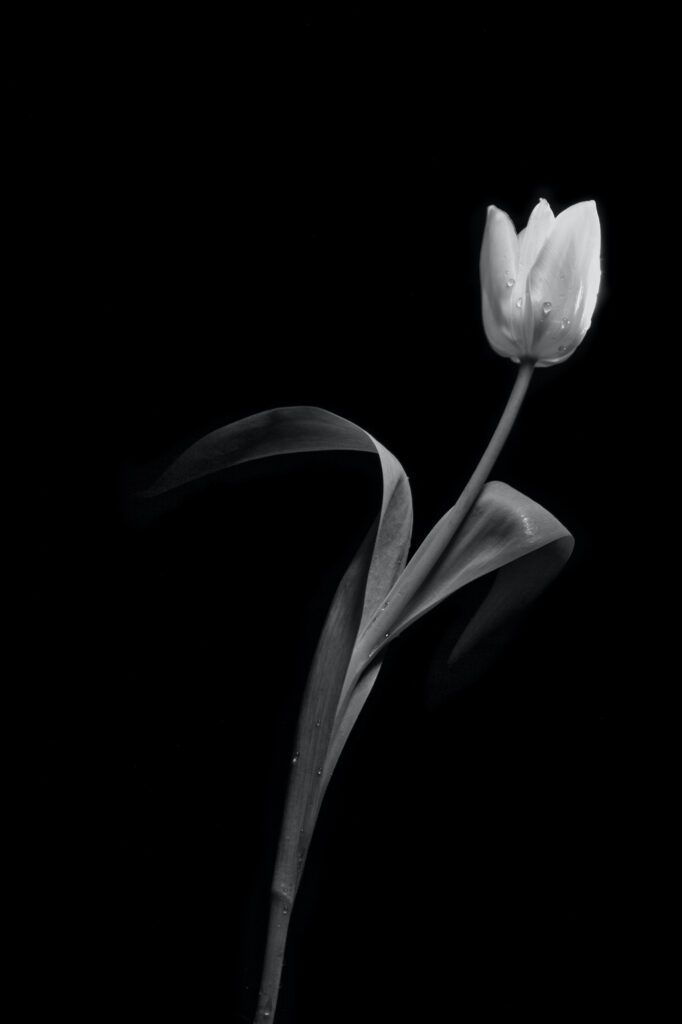
In addition to his portraiture, Mapplethorpe is also known for his delicate and ethereal flower photography. Beautifully composed centralized images of either a single flower or a bunch of flowers are lit to create fascinating shadows. Balance and harmony were key to all of Mapplethorpe’s work. He consciously constructed and composed his images to show geometry. This is also evident in his portraits, where the sitter is shown from the front and in perfect symmetry.
But Mapplethorpe himself saw nothing shocking in his work, preferring to use it to utilize different photographic techniques, such as photogravures and Cibachrome.
Could it be argued that Mapplethorpe was more a documentary photographer than an art photographer? Not in my opinion, mainly due to the art-historical nature of his work. The posed and deliberate structure of his images is an art form, which just happens at times to document a time of great social significance. Mapplethorpe died in 1989 at the age of 42 from an AIDS-related illness, but his legacy lives on in the collections of major museums around the world and through the work of the Robert Mapplethorpe Foundation.
Jeff Wall
The Canadian artist Jeff Wall was instrumental in defining the Vancouver School of Photography and focused on academia as an art historian before turning to photography as a conceptual art form. His work is produced large scale and explores ideas on the nature of images, representation, and memory. He is famous for his large-scale backlit color transparencies, subverting a format more commonly associated with advertising. He could be said to have pioneered the use of color photography in fine artwork due to the striking effect it created when displayed in museums and galleries.
The term ‘near documentary’ is often associated with Wall, in that his images often appear as documentary photographs but are in fact recreations of moments that he has observed. Using actors and stand-ins, he investigates the meaning and impact of documentary photography.
His most famous image Dead Troops Talk sold for $3.6m in 2012. The image shows wounded Russian soldiers in Afghanistan but was staged by Wall after he was inspired by war photography. The destruction and wounds of the men convey the realities of war in a way that is extremely moving, and most viewers would struggle to realize that the shot was staged. Herein lies Wall’s skill. He attempts to reconstruct and represent his reconstructions of moments, fiction, and art history as precisely and accurately as possible.
Ansel Adams
Iconic American photographer Ansel Adams is known for his astonishing images of the American West, in particular Yosemite National Park. His technically precise and beautifully composed black and white images capture the grandeur and magnificence of the natural world. Adams also formed Group f/64 along with Edward Weston and Imogen Cunningham, to elevate photography to fine art. At the time, photography was very much regarded as only a form of documentary.
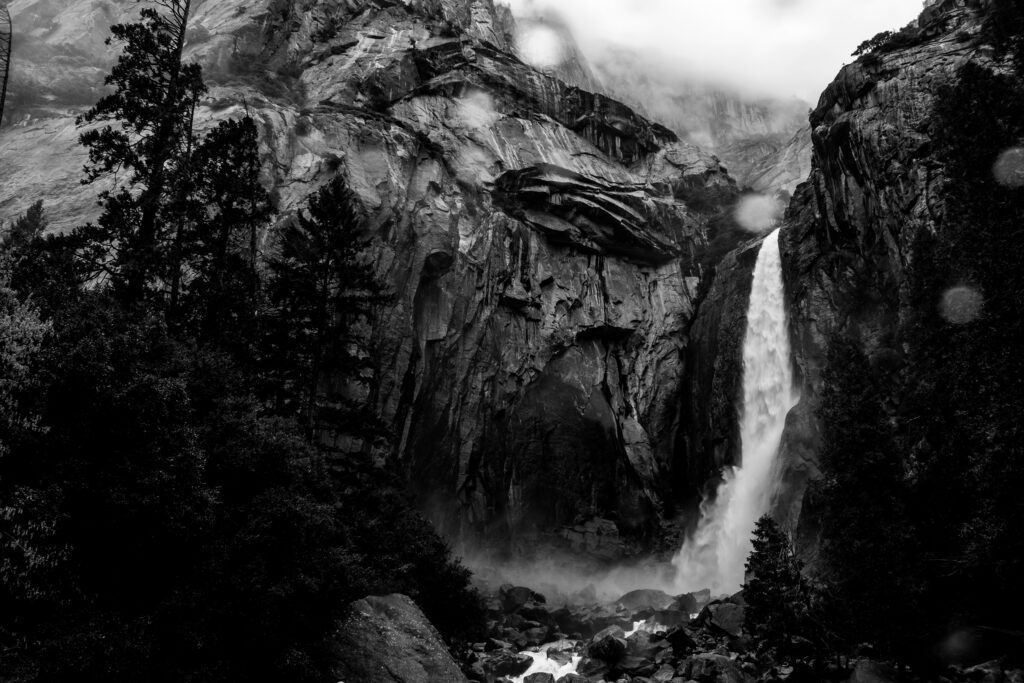
Financial pressures meant that Adams was compelled to spend much of his time as a commercial photographer, worrying continuously about paying the bills. But his technical mastery of photography was legendary. Adams developed the ‘Zone System’ of controlling and relating exposure and development, showing every tone from pure white to pure black.
Given the scale of the landscape he worked in, Adams frequently experimented with large-scale images to try and convey the majesty of the scenes he was capturing. In later life, he returned frequently to earlier works, enlarging his images to 1.5m murals. As the appreciation of photography as an art form grew, Adams’ images were shown in museums and galleries, and he spent much of the ’70s printing negatives to satisfy the demand for his work. Ansel Adams died in 1982, but his images remain some of the most iconic ever captured.
Recommended Reading: Want to learn how to make your photos stand out from everyone else’s? Grab a copy of Photzy’s Effective Storytelling premium guide.

